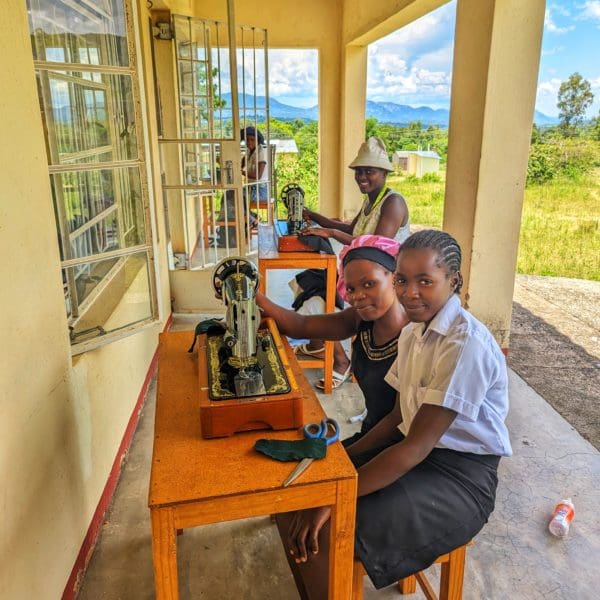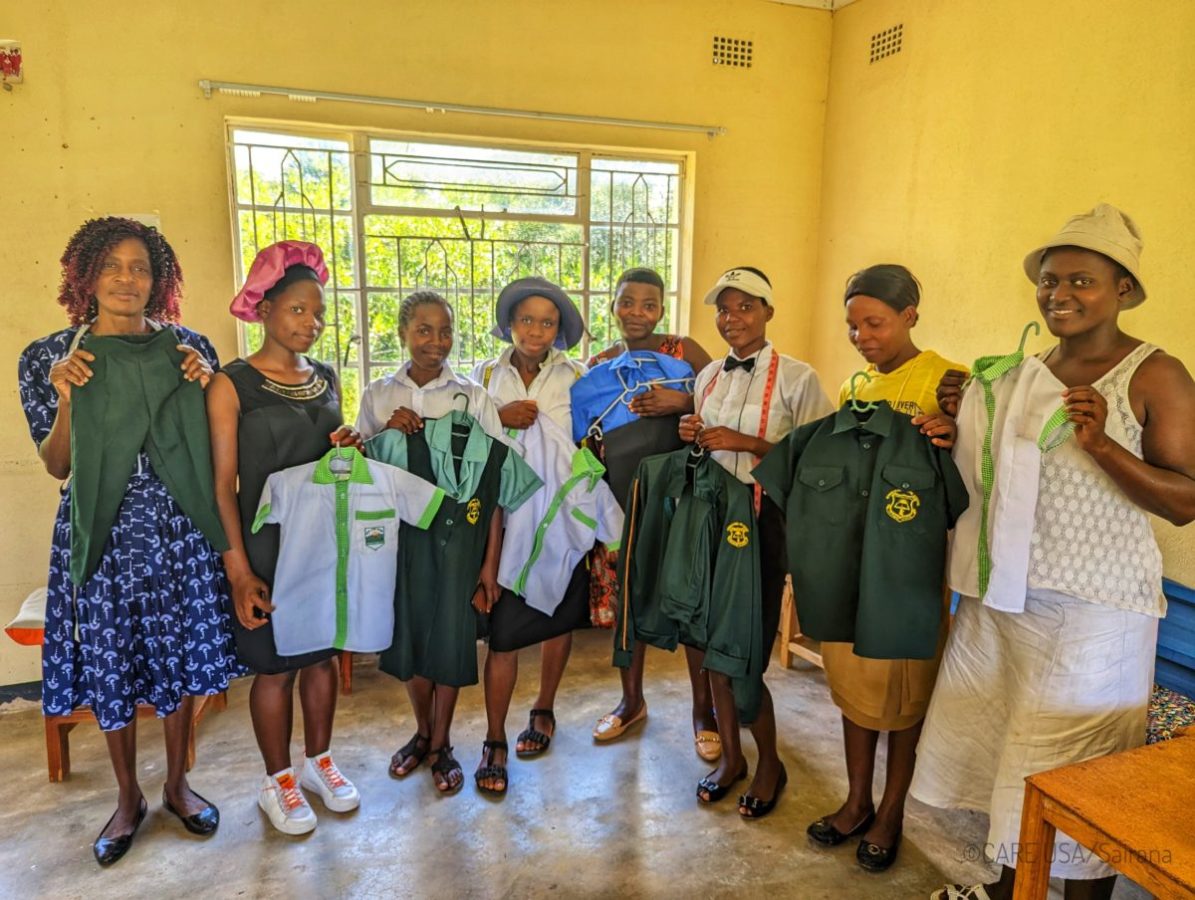Building Resilience amongst youths in Mutare, Zimbabwe – A Case Story from The USAID Takunda Mastercrafts Short Courses
Life-Enhancing & Trendy Sewing by Female Youths in the USAID Takunda Mastercrafts Short Course
Written By: RUMBIDZAI MATEMBA-MUTASA
Takunda, meaning “we have overcome” in Shona, is a $55M five-year (October 2020 to September 2025) USAID/BHA-funded Resilience Food Security Activity in Zimbabwe. The program is being implemented by CARE together with partners: Bulawayo Projects Centre (BPC), Environment Africa (EA), Family Health International (FHI360), International Youth Foundation (IYF), and Nutrition Action Zimbabwe (NAZ). The primary goal of Takunda is to achieve “Sustainable, Equitable, and Resilient Food, Nutrition, and income security in Manicaland and Masvingo provinces of Zimbabwe.”
USAID Takunda will reach more than 300,000 participants with training and support for sustainable, equitable, nutritious, resilient food and income security. Of these, 173,000 will be youths (aged 19 to 35 years) who are going to be engaged in various activities in the program’s Youth Interventions Model. The model is informed by consolidated findings from at least six research studies undertaken during the program’s ‘refine and implementation’ year. Through these findings, USAID Takunda’s Youth Strategy intentionally streamlines best practices for meaningful youth engagement. Recommendations included fostering intergenerational partnerships, life skills training, and leveraging of existing youth-friendly spaces and youth champions. This influenced the program’s selection and adoption of Positive Youth Development-oriented approaches and interventions.
A recent visit to Gombakomba Training Center in Gombakomba village, Ward 6, Mutare in Manicaland province, gave insights into how the lives of a group of six female youths are being positively transformed through the enhancement of their skills, knowledge, and professional networks in a USAID Takunda funded Master crafts short course in sewing (six months long). Fiona Maparanyanga (24), Yvonne Tizai (21), Lorraine Mubvuta (24), Rumbidzai Gondo (20), Enia Chafanza (20), and Rumbidzai Gaya (25) have varying numbers of months in training. Their trainers, Mrs. Muradzikwa and Mrs. Museta were also available when the interviews were done. The Master crafts also involve community apprenticeships facilitated by local artisans like the trainers.

© Sairana Ahsan/ CARE
Amongst the six female youths interviewed, most shared that they had successfully written their ordinary level examinations but failed to get back into advanced level education due to a lack of finances to fund their school. Only a couple had failed the exams. Consequently, the girls had to stay home doing nothing meaningful to earn a living. Considering the high rate of unemployment in Zimbabwe (….), it is almost impossible for youth to secure employment with such a level of education. For those married, they took care of family and waited on provisions from their husbands which were tough because, being informally employed, their husbands did not make much money, and financial strain was always evident in their planning for household day-to-day needs. Four of the youths shared that the major reason why they took on training in sewing is that they would like to enhance themselves and their families by making sewing a livelihood. The remaining two shared that sewing interests them and, in addition, they would like to make a living out of it.
“I am one of many siblings, and so if I make sewing a source of income, I can be able to help my family once I begin to make money,” said Yvonne Tizai.
So far, the youths have had positive experiences in their learning journey, namely acquiring advanced level knowledge in handling sewing gadgets, threading, as well as cutting and designing to make several types of clothing. They are happy with the course content as it is relevant to the market needs. The youths have high hopes for the future after the training. Some shared that they plan to move to a bigger city, for instance, Mutare, which is the nearest, and then through a relative, try to find sewing space to begin working independently, obtaining client networks too.
“After my training ends, I plan to work whilst at home. I do not have sufficient funds to pay for rentals for my own sewing space, so that is why I plan to begin at home. However, I have not yet decided on exactly what to sew because, through my training, I learned to sew various types of clothing.” said Lorraine Mubvuta.
Asked how much profit they were making per month, the girls highlighted that this depended on a particular month as influenced by demand.
For instance, sales during the time when schools resume were high in comparison to sales during a normal month which would be low. The youths shared that the advantage of sewing is that one made good profits depending on the number of orders placed and gave an example of profits that they had just made from sales of boys’ school uniforms to a nearby primary education school.
“When schools opened at the beginning of January 2023, we received an order for 12 primary school-going boys’ uniforms. The breakdown of costs incurred was such that we needed 2 meters of cloth per uniform at USD6 per meter to give USD72 for buying cloth. Then 82 buttons were needed for the 12 uniforms costing USD8.40. The sewing thread needed for the work to be done was USD5, 12 zippers needed cost USD6, and the total costs were USD91.40. We sold each uniform at USD9 and got a total of USD108. Subtracting our costs, we made a profit of USD16.60 for this order. It took us less than a week to complete the order; thus, the more orders we get, the more profit we can make.”
Some challenges they face are power outages which have become a menace throughout the country.
“We are training 21 female youths in total. However, you were only able to interview 6 of them who came today because when there is a power outage like this, those who will be at the stage where they need to do overlocking cannot as the sewing machines are electrically powered,” explained Mrs. Muradzikwa.
Another challenge is that the sewing machines are few, while the number of students is growing.
The Master Crafts program of USAID Takunda has the potential to provide adequate vocational training to youths for better livelihood choices.

